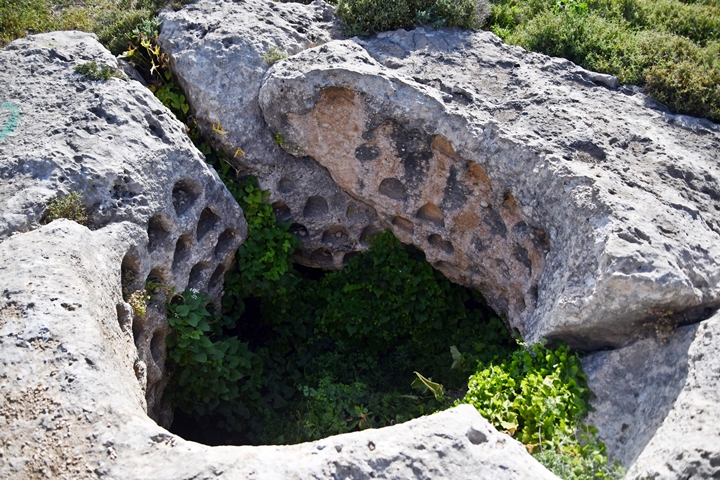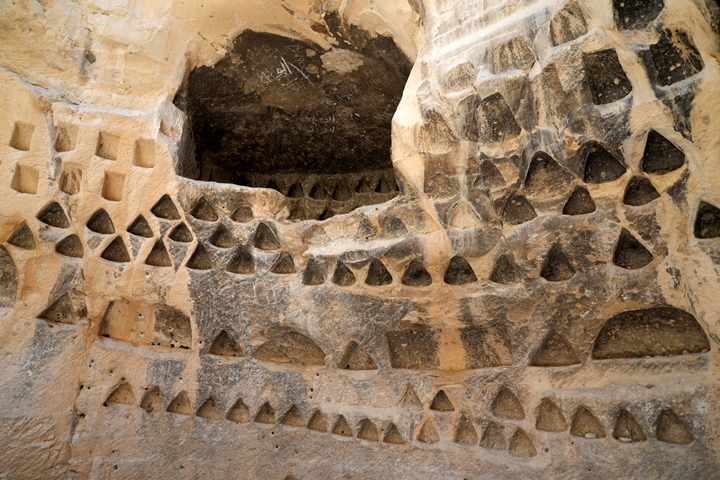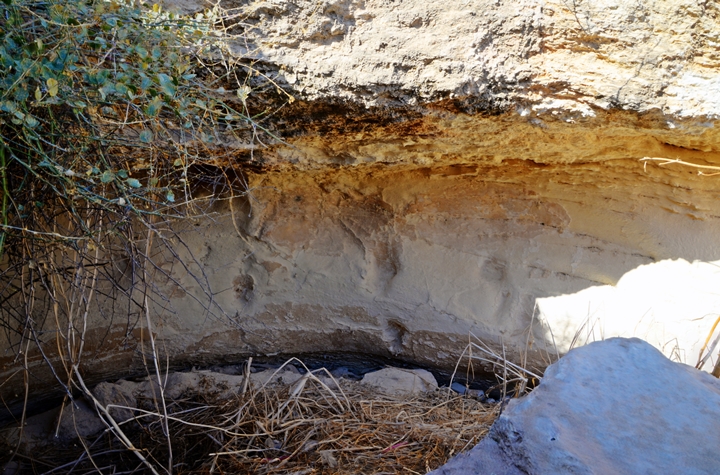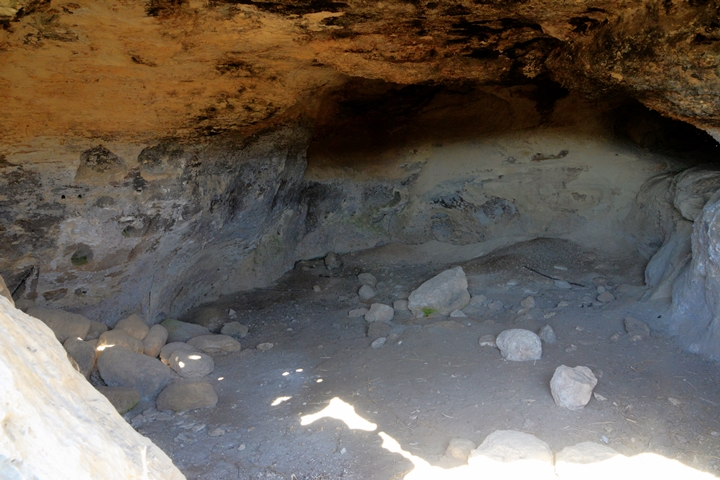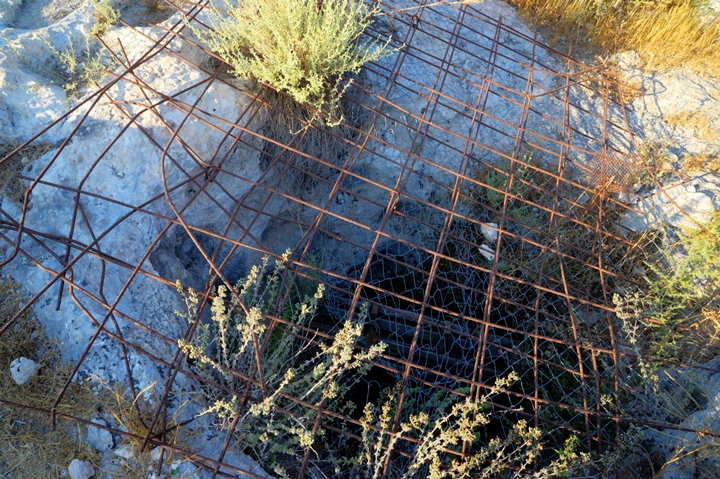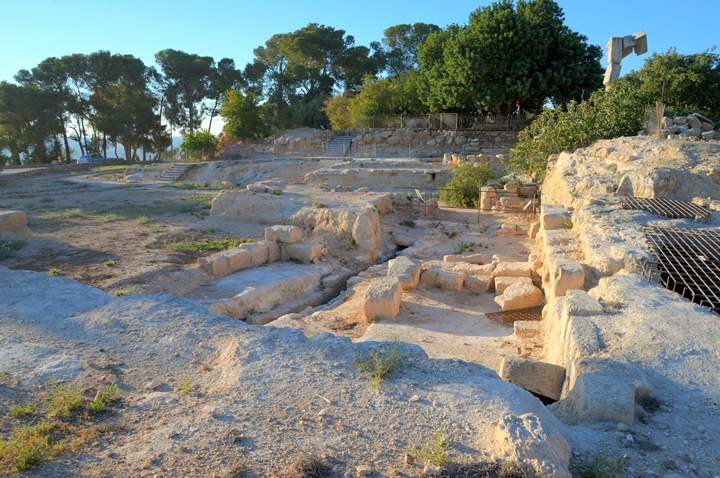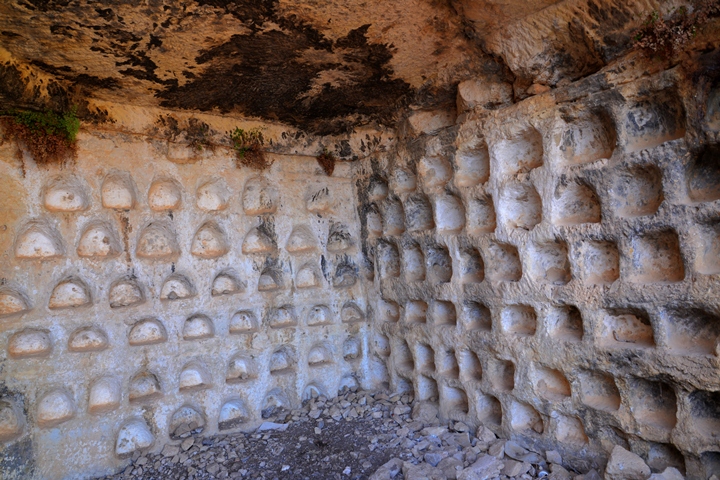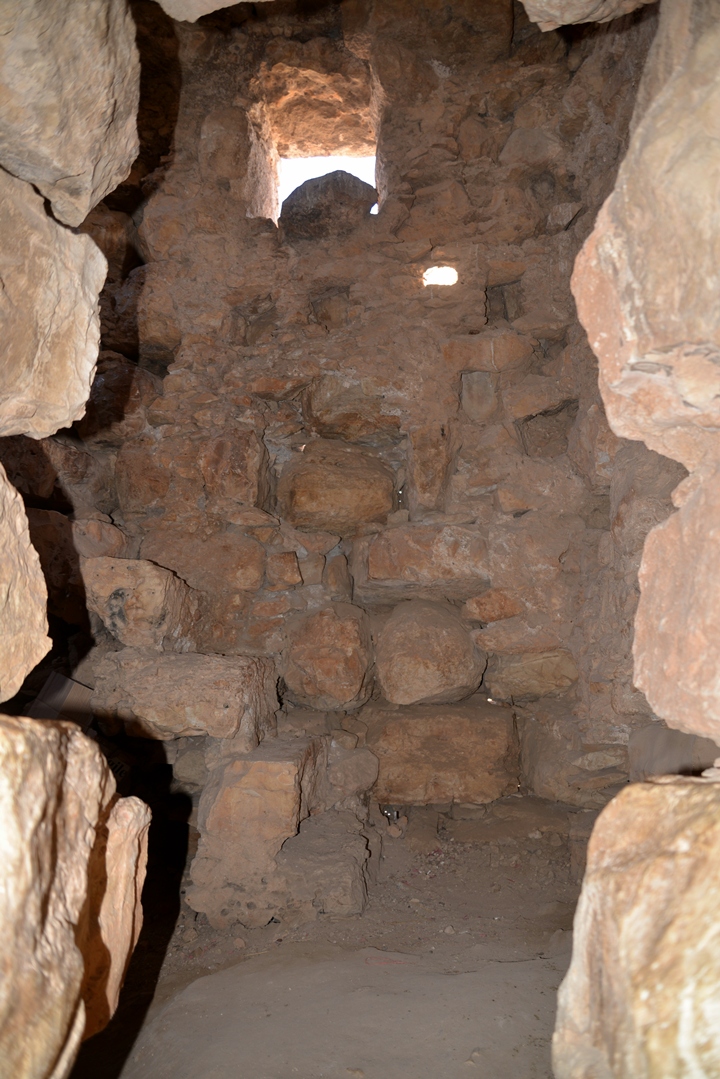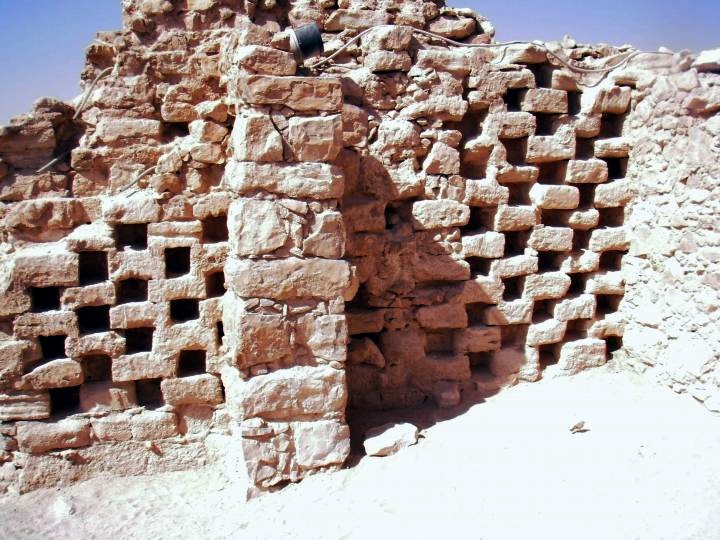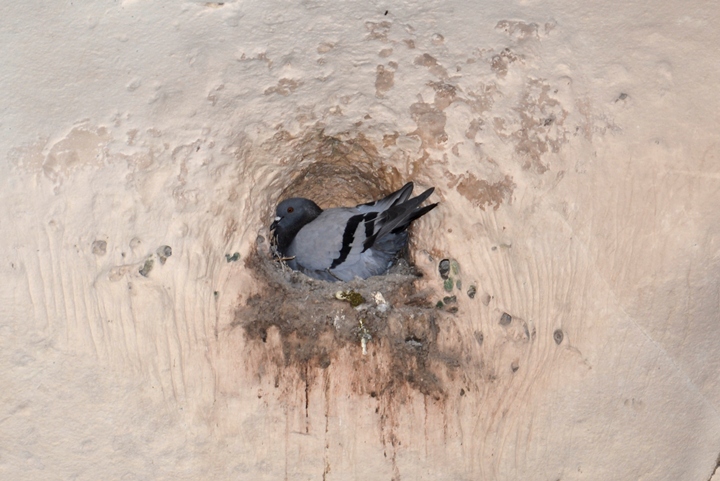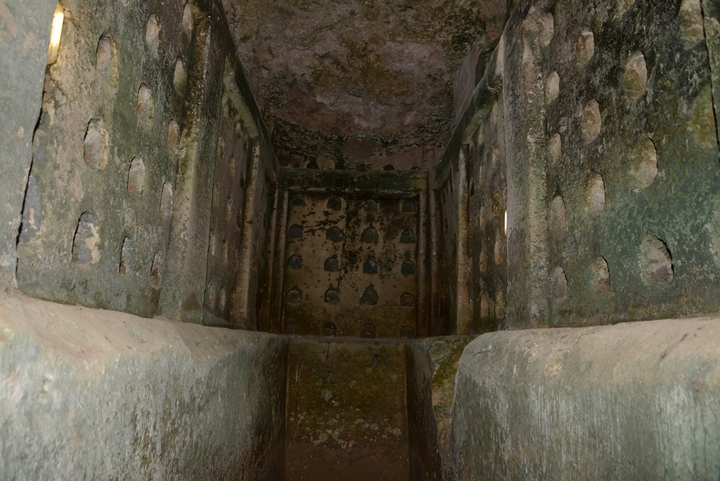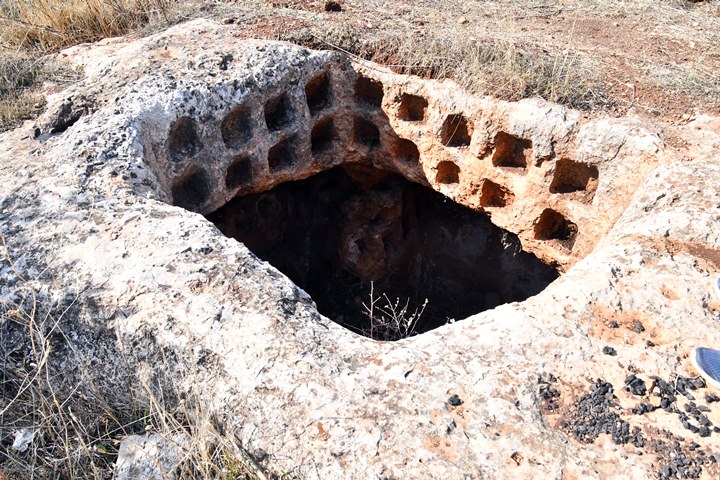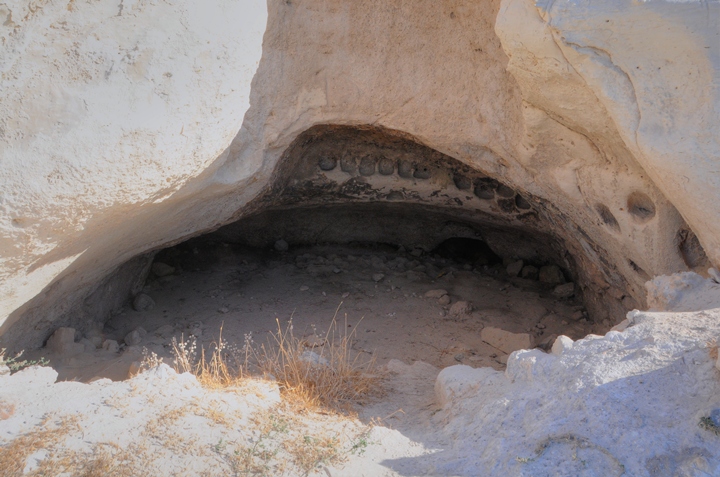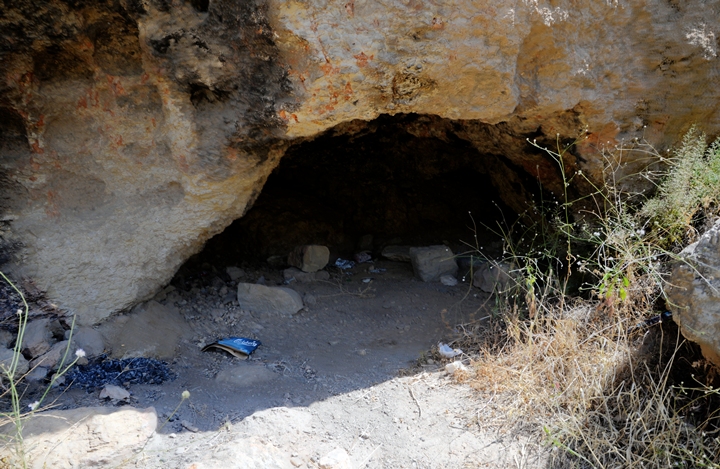An overview of ancient columbarium installations that are featured in Biblewalks.com
Contents:
* Background
* Sites
* Etymology
* Biblical references
* Links
Background:
Columbarium as a farming installation:
This web page provides an overview on Columbarium, which is a common farming installation used in ancient Israel. The word ‘columbarium’ is based on the Latin word columba (‘pigeon’), as it was originally used for a place to house doves and pigeons. The agriculture use of the birds was for their meat, while the bird droppings were used as a fertilizer for growing food.
Most of these installations are found across Judea, but some are also found in other sections of Israel. The soft chalk rock in the low lands of Judea, for example in Maresha, were easy to cut the dozen of niches that were required for the nesting of the birds. Most of these installations are from the Hellenistic, Roman and Byzantine periods.
Columbarium for burial and ritual:
The Columbarium served a different purpose in the Roman world in Europe. While columbaria in ancient Rome were named after the nesting boxes used for doves, they were not typically used to grow doves. Rather, the niches in the columbaria were used to house the urns containing the cremated remains of the deceased. Since burning the dead body and storing the ashes is not a Jewish custom and so these type of columbarium are not common. In the samples listed below only one site (Mazor Mausoleum) was used for this purpose.
Links to Biblewalks sites:
There are dozens of columbarium installations in Israel. The majority were constructed in underground caves.
Here is a sample of sites that were featured in BibleWalks.com. You can visit any of these sites by clicking on the name of the site.
On a ridge on the north side of Nahal Pla’i valley, near Beit Shemesh, are ruins of a ancient village. It is identified as the home town of Samson’s Delilah. On the north side of the ruin is an installation cut into the sides of the wall.
Horvat Midras (Khirbat Durusiya) is a large archaeological site in the Judean Shephelah region, now part of the Adullam park. There are several large caves with columbariums.
Horvat Shu’a is an archaeological site, situated on a hill on the southern bank of Nahal Shu’a. This site is located 1km east of Moshav Tzafririm, within the Adullam-France National Park, in the area of the low hills (Shephelah) of Judea.
Scant remains of a columbarium on the walls of one of the caves on the east side of the summit:
Horvat Lavnin (Khirbet Tell el-Beida) – “The ruin of the white mound”) is located in the Adullam -France National park, situated on a hill above the western bank of Nahal Hakhlil. This area, south of the valley of Elah, has fertile lands with broad valleys, and was in ancient times a highly populated farming area.
On the mound are traces of fortifications, building walls, installations, columbarium, burial caves, cisterns and a carved lintel.
Khirbet el-‘Alya is a multi-period site, towering over the west side of Ramat Beit-Shemesh Aleph.
On its south east side, is a cavity with holes along the walls. This was a Columbarium cave, which is common in Judea.
Ruins of a royal palace and administration center, on the south outskirts of Jerusalem, overlooking the road to Bethlehem and Hebron.
A Columbarium was cut inside a cave during the second temple period. The cave, seen here on the right under the iron screen, was accessed by a wooden ladder. It consists of a central hall with 4 smaller chambers. On the walls were niches where the pigeons nested.
On the hill are ruins of a village and agriculture installations dated to the first temple and Roman/Byzantine periods.
Inside some of the cisterns are holes cut into the walls, for the use of a columbarium.
Kh. Tibneh, in the hill country of Ephraim, was a Hellenistic and Hasmonean fortress that protected the road from Antipatris to Gofna. The Biblical city is identified as Timnath Serah – the residence of Joshua and his burial-place.
A tomb (perhaps Joshua’s?) was converted to a Columbarium. Small niches were cut into the walls of the antechamber.
This is a grand Mausoleum, dated to the Hellenistic and Roman periods, and is one of the oldest standing structures in Israel.
Inside the eastern chamber are niches for funeral urns, with several dozen square holes. This is another form of “columbarium”. The holes were used to store vases (urns) with the cremated remains of the diseased, probably the ashes of servants of the Mausoleum’s owner.
This is the last and most important fortress of the great Jewish rebellion against Rome, and one of the most impressive archaeological sites in Israel.
A Columbarium is seen on a tower on the west casemate wall. It was used for multiple purposes – as an observation tower, raising pigeons for their meat, and bird droppings which were used as a fertilizer for growing food.
Tel Maresha is an Iron Age and Hellenistic period city, with an amazing underground lower city. One of the installations is located in the “Polish”cave:
In one of the holes we noticed one of the pigeons nesting.
A larger structure of a commercial columbarium is located near the “Polish” cave. The cave was known as “es-Suk” (the market), and now is known by the name “columbarium” cave. It is the largest and best designed cave in Maresha.
Its form belongs to another type of columbarium caves, arranged as rectangular halls arranged in a cross form. These columbarium caves are dated to the 3rd century BC (Hellenistic period) and were in use until the first of second century AD. The cave started as a columbarium, but during the beginning of the 2nd century BC it was converted to other commercial uses such as storing goods.
Zeitun er Rameh:
Most of the samples above are from Judea and Samaria, but here is one from the Galilee. This columbarium is in the Upper Galilee, east of the Druze village of Rameh.
Tel Zafit (Tell es-Safi) is one of the largest Biblical sites in Israel. Settlement started in the Early Bronze Age, and was occupied with some interruptions for 5,000 years until modern times. It is widely accepted by scholars as the Philistine city of Gath – the hometown of Goliath.
A small columbarium was carved into one of the caves for fresh meat supply.
This is a spring, pool and garden located in a valley south of the community of Dolev in Samaria.
One of the caves was used as a columbarium (housing structure for doves and pigeons). The niches are seen on the left side.
Etymology:
- Columbarium – The word is based on the Latin Colomba, which is based on the bird family of pigeons and doves (Latin: Columbidae). Another term for the bird structure is “dovecote”. The term “Columba” is the Latinized form of the Ancient Greek word “kolumbos”, meaning “a diver”, as the birds have an ability to dive (hence also named “dove”).
- The idea that columbaria were used to grow doves may have originated from a misinterpretation of the Latin word “columba,” which can mean both dove and niche. However, while doves were considered sacred in ancient Rome and were often used in religious ceremonies, they were not typically raised in columbaria.
- Columbarium is a noun, its plural is columbariums or columbaria.
- Doves versus Pigeons? Doves and pigeons are both members of the bird family Columbidae and are closely related. In fact, the terms “dove” and “pigeon” are often used interchangeably to refer to the same bird species. However, there are some differences between the two. One of the main differences between doves and pigeons is their size. Doves are generally smaller and more slender than pigeons, with a more delicate appearance. Pigeons are larger and more robust, with a stockier build. Another difference between the two is their behavior. Doves are generally more gentle and docile than pigeons and are often kept as pets or used in ceremonial releases. Pigeons, on the other hand, are known for their ability to navigate and are often used in racing or messenger roles. In terms of appearance, doves are often recognized for their soft, muted coloration, with shades of brown, gray, and white. Pigeons, on the other hand, can have more vibrant and varied coloration, with iridescent feathers in shades of green, purple, and blue. Overall, while doves and pigeons share many similarities and are closely related, there are some differences in size, behavior, and appearance that distinguish the two.
Biblical references:
The Bible contains several references to pigeons and doves, but not specifically to their growth. However, here are some verses that mention pigeons and doves:
- Leviticus 12:6-8: This passage describes the purification offering for women after childbirth. It says that the woman shall bring a lamb and a pigeon or a dove as a sin offering.
- Genesis 8:8-12: This passage describes Noah sending out a dove from the ark to see if the floodwaters had receded. The dove returned with an olive leaf in its beak, indicating that the waters had indeed receded.
- Matthew 10:16: In this verse, Jesus sends out his disciples and tells them to be as shrewd as snakes and as innocent as doves.
- Luke 2:22-24: This passage describes the presentation of Jesus at the temple. It says that Mary and Joseph brought him to the temple and offered a pair of doves or two young pigeons, as required by the law of Moses.
- Psalm 74:19: This verse speaks about the sanctuary of God, saying, “Do not hand over the life of your dove to wild beasts; do not forget the lives of your afflicted people forever.”
Links and References:
- “Pigeons in Ancient Israel,” by Oded Borowski. This article, published in the journal Near Eastern Archaeology, discusses the role of pigeons in ancient Israel, including their use in sacrifices and as messengers.
BibleWalks.com – walk with us through the sites of the Holy Land
Earthquakes<<<—Previous —<<< All Info >>>—Next Info—>>> Mud Bricks
This page was last updated on Mar 31, 2023 (add Biblical references, link)
Sponsored links:
